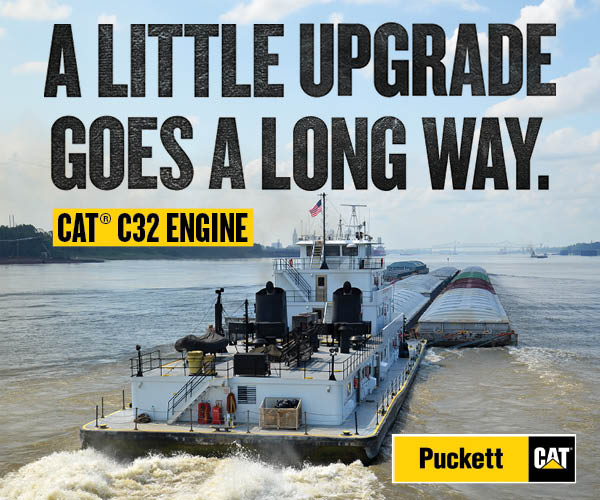Dealing With A Tight Squeeze In The Cuyahoga River
At the end of November, the Coast Guard published a notice that it would establish a regulated navigation area (RNA) from December 2 to July 11 for “certain waters of the Cuyahoga River in Cleveland, Ohio.” The RNA pertains to a $40 million shoreside rehabilitation and construction project along 2,400 feet of the river’s course around and past an area known locally as “Irishtown Bend,” so-called because of Irish immigrants who settled there in the 19th century. It is within a larger area in Cleveland known as “the Flats.”
By the mid-20th century, the Irishtown Bend neighborhood had faded. The area was largely abandoned by the 1980s, except as a dumping ground for fill.
Then, reclamation efforts started but with a new, grander idea to make the derelict area part of Cleveland’s regional parks and, more extensively, to form a final link between the Cuyahoga Valley National Park and Lake Erie.
That vision has gained broad regional support. The current bulkhead repair is the first of a series of projects that will result in a 25-acre park and green space costing about $60 million. The bulkhead construction is critical to shore up the riverbank and prevent total collapse. For the river’s commercial traffic, doing nothing is not an option. The U.S. Coast Guard has estimated that if the erosion continued unabated, it could close the river for 12 to 18 months.
The RNA limits vessel speeds near the construction area and prohibits vessels from being inside the RNA during construction hours unless authorized by the captain of the port or a designated representative. This includes all navigable waters within 10 feet of construction barges. The boundaries are the Detroit-Superior Bridge and, to the south, the Columbus Road Bridge.
Significant for maritime shipping, the enacted RNA contains critical compromises compared to the Coast Guard’s originally published RNA released last May. That first RNA proposed restrictions to be in effect from 8 a.m. through 4 p.m. Monday through Friday, starting August 15, 2024, and continuing to November 30, 2025. The Coast Guard asked for comments and received strong pushback.
Some of the published comments included:
“The proposed rulemaking would negatively impact our ability to transport these materials and put our customers at risk of running out of inventory,” said Grand River Navigation Company, based in Traverse, Mich.
“The restrictions that would result from the proposed regulated navigation area would impose unreasonable and economically detrimental burdens on Cleveland-Cliffs’ Cleveland works,” commented Cleveland-Cliffs, the largest flat-rolled steel producer in North America. “Freighters cannot transit the river channel without coming within 10 feet of the construction barges.”
“Over a year’s worth of significant impact to the federal navigation channel is unacceptable to our shipping companies, their customers and the manufacturing sector of northern Ohio and the nation,” stated the Lake Carriers’ Association.
Commenters argued that the Port of Cleveland, the sponsor for the Irishtown Bend project, and its contractors, led by Goettle Construction, could have developed a project that didn’t impede river traffic. Most shippers who commented also expressed their support for the Irishtown Bend park, green space and related improvements.
Shippers noted that, while there is urgency to get started, the erosion and bank collapse have been going on for decades. Thus, they argued it likely wouldn’t have mattered too much if a reevaluation took another few weeks. It’s not clear if the port reassessed the construction plan, and the port did not reply to questions about those concerns. A Coast Guard spokesperson said the agency’s top concern was waterway safety, not design processes or construction methods.
In response to the concerns over the proposal announced in May 2024, the Coast Guard convened a series of stakeholder meetings, which included, according to James Weakley, president of the Lake Carriers’ Association (LCA), participants from the port and its contractor, waterfront business owners and the LCA. Weakley characterized the meetings as “complicated.” In the end, though, he said the group’s work improved a challenging situation.
The November RNA offered some compromise and flexibility. While the current plan retains the original engineering scope, it modifies project dates and timing “to accommodate stakeholder concerns related to vessel and facility scheduling,” the Coast Guard stated.
From December 2 to January 31, the RNA is effective from 7 a.m. Tuesday through 7 a.m. Thursday. February has no restrictions, since there is no expected traffic. March presents an 8 a.m. to 4 p.m. restriction Monday through Friday. Then, from April to July 11, the 7 a.m. Tuesday to 7 a.m. Thursday schedule resumes. Also, the November RNA expects project completion in about eight months, compared to 14 months proposed in May 2024.
Shippers can still transit the Cuyahoga, but it requires new teamwork. In light of that, a new role has emerged for LCA, with the association essentially serving as a “marine exchange for the river,” Weakley explained. LCA will track vessel transits for both LCA members and non-members and coordinate with the contractor. Weakley said the project will have “significant costs” for shippers, but he said the “good news is that we will be able to supply customers with enough raw materials that they will not have to reduce their output.”
“At this point, we have a workable plan,” said Weakley, who commended the Coast Guard for brokering the amended RNA.
Weakley provided a late update a few days after the RNA’s effective date of December 2. LCA’s on-site coordinator reported that the first week of the RNA went well.
“All sides appear to be satisfied with the operations,” Weakley said.


